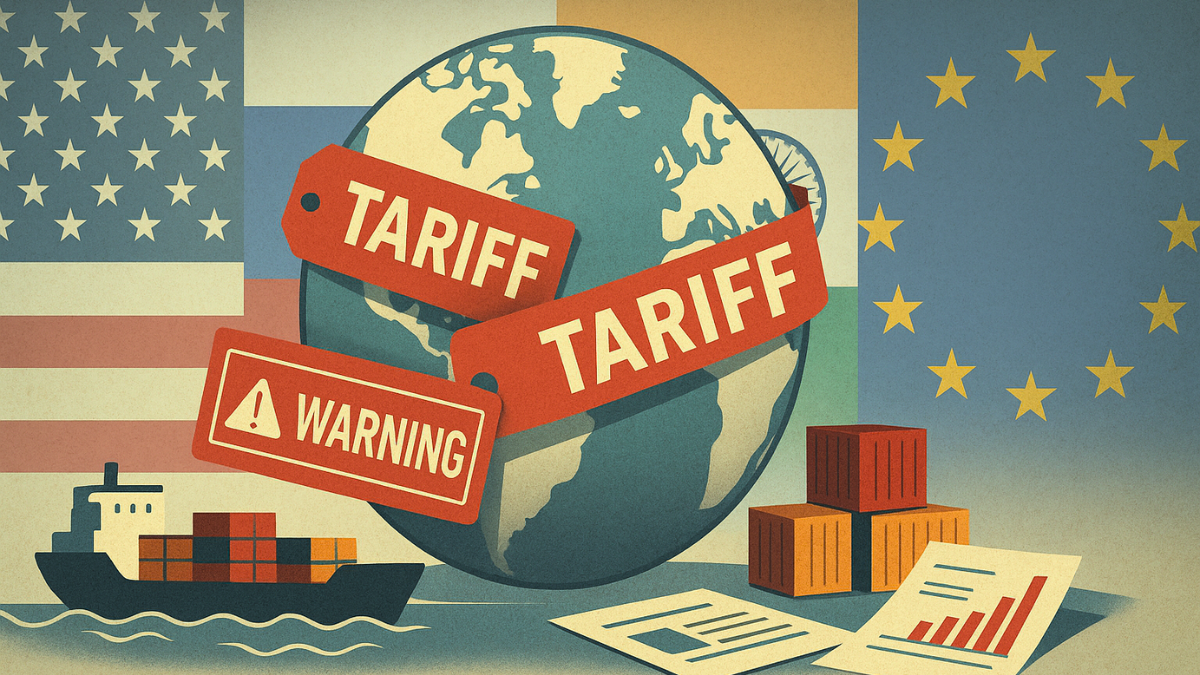How U.S. Secondary Tariffs on Russian Trade Partners Could Reshape Global Markets
Former President Donald Trump has proposed sweeping secondary tariffs that would apply to any country continuing to trade with Russia, should Moscow fail to agree to a ceasefire in Ukraine by August 8, 2025. These tariffs, set at 100%, would target imported goods from nations like China, India, and Turkey—Russia’s largest energy clients—effectively penalizing them for supporting Russia’s wartime economy. This move would represent one of the most aggressive applications of economic sanctions in recent history.
Russia remains the third-largest oil producer globally, following Saudi Arabia and the United States, and it continues to fund a significant portion of its national budget—up to one-third—through oil and gas revenues. A reduction in Russian oil and gas flowing into global markets could create a major supply crunch. According to analysis from Capital Economics, this would elevate energy prices internationally, as OPEC+ nations may not be able or willing to compensate with increased production. In 2022, the last time energy markets were disrupted by geopolitical conflict, global inflation soared as crude oil prices peaked above $120 per barrel. Should Trump’s plan move forward, a repeat of such price shocks is likely.
Russia has also developed mechanisms to obscure its trade routes, including the use of a “shadow fleet” of tankers, intended to bypass detection and sanctions. Yet even this fleet may be insufficient if international shipping insurers or port authorities—particularly in Europe—begin denying services to sanctioned vessels, compounding the economic chokehold. Secondary tariffs would further pressure Russia’s trading partners to isolate Moscow economically, but at the risk of triggering inflationary aftershocks globally.
Rising Consumer Prices in the U.S. from Key Imports Like Indian Electronics
A major consequence of Trump’s proposed tariffs is the likely spike in consumer prices within the United States. India has emerged as one of Russia’s top oil buyers since the full-scale invasion of Ukraine began in 2022. As a result, Indian exports to the U.S.—valued at over $3 billion in 2024, largely in electronics and raw materials—would be taxed at 100% upon entering U.S. ports.
One notable example is Apple, which is shifting a significant portion of its iPhone production to India. If the new tariffs are enforced, the cost of iPhones produced there could double for U.S. consumers. As explained by the U.S. Chamber of Commerce, tariffs are generally passed down to consumers, not absorbed by companies, especially in price-sensitive industries like electronics and personal devices. That means American families could face rising costs on everyday essentials—from smartphones to home appliances.
India has denounced the U.S. proposal as unjustified, particularly given that Washington itself has maintained limited trade ties with Russia, mainly importing uranium and fertilizers critical to U.S. agriculture and energy. According to the International Monetary Fund, India and China now account for more than 50% of Russia’s crude oil exports, which explains why Trump’s strategy seeks to directly disrupt their trade with Moscow. However, this approach could also derail ongoing U.S. negotiations with India aimed at strengthening technology and defense partnerships.
Geopolitical Backlash and the Risk of a Global Trade War
Beyond rising prices and supply chain disruptions, the long-term geopolitical consequences of these secondary tariffs could be severe. China, the largest buyer of Russian oil, stands to be the most affected. The U.S. imported nearly $428 billion in goods from China in 2023, according to the U.S. Census Bureau, including electronics, clothing, and machinery. A 100% tariff on Chinese goods could cripple American retailers and manufacturers alike, while inflaming tensions between the world’s two largest economies. The impact could reverberate far beyond oil, jeopardizing ongoing U.S.–China trade talks and undermining global economic stability.
The European Union, too, remains entangled in the issue. While Brussels has reduced its dependence on Russian energy since 2022, it still imports certain raw materials from Russia. The EU and U.S. recently signed a trade agreement that includes a 15% tariff on most EU exports to the American market, but European leaders now fear that secondary tariffs could escalate into a broader trade conflict. Such measures would disproportionately hurt European pharmaceutical and machinery manufacturers, many of which serve critical roles in U.S. supply chains.
Meanwhile, Russia’s economy, which grew by 4.3% in 2024, now appears vulnerable. The Russian Economy Ministry warns of an approaching recession, while the IMF predicts sluggish growth of just 0.9% for 2025. If secondary tariffs effectively cut off export demand, especially in energy, the Kremlin could find itself without the funds needed to sustain both domestic programs and its military operations in Ukraine.
In summary, Trump’s tariff strategy seeks to pressure Russia by disrupting its access to global markets—but the ripple effects could be vast, from inflation in the U.S. to geopolitical rifts between major trading blocs. Whether these policies succeed or backfire depends on how aligned America’s allies remain in the face of economic sacrifice, and whether alternative energy and supply networks can be mobilized in time.







